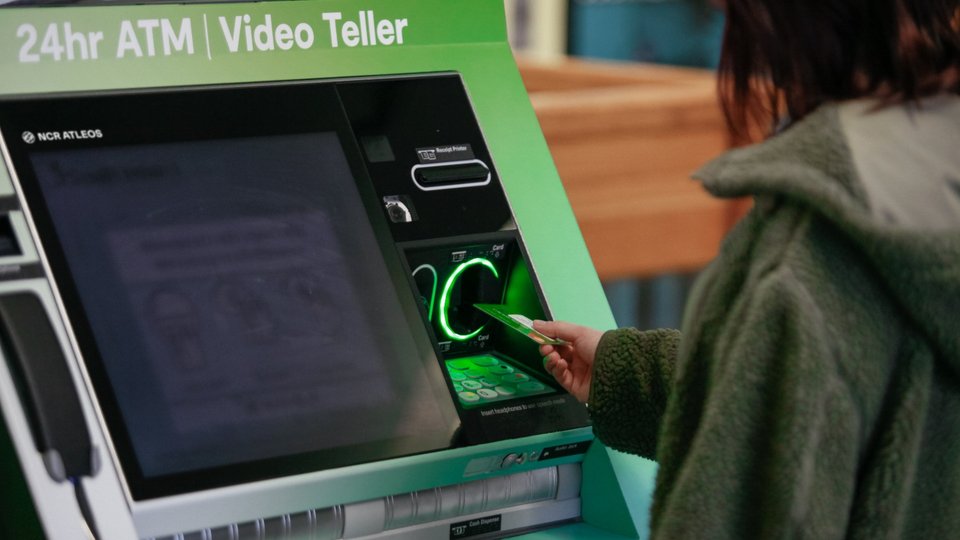Payments
The utility ATM network: Strategic infrastructure for the digital-first financial era
If the ATM is about cash, the utility ATM network provides a cash infrastructure. It's a critical solution for financial inclusion and stability, providing essential cash access for undeserved populations.

November 7, 2025 | Ben Bregman, SVP of Global Network Solutions for NCR Atleos
In mid-1967, two events took place within a dozen miles of each other in London that shook the world. While The Beatles were putting the finishing touches on "Sgt. Pepper's Lonely Hearts Club Band," Barclays was installing the very first ATM. A comedy actor made the first £10 withdrawal, and with that, a new era of convenience was born.
Fast forward to 2025, and today roughly three million cash machines circle the globe. Lesser known—even to many financial services experts—is the vital, future-proof role today's utility ATM networks play in linking this vast infrastructure. While consumers merely see a convenient machine, utility networks are the strategic backbone for financial institutions (FIs), enabling digital-first banking and financial stability. Lesser known—even to many financial services experts—is the vital, future-proof role today's utility ATM networks play in linking this vast infrastructure. While consumers merely see a convenient machine, for financial institutions (FIs), utility networks are the strategic backbone enabling digital-first banking and financial stability.
The reality is, they are not just about cash; they are about access, efficiency and resilience. For neobank giants like Chime, the ATM is, as one industry expert put it, "the branch." Your laptop will never dispense a crisp bill. For traditional FIs, utility networks allow for cost-effective remote cash access at the exact time when branch locations are shrinking. Utility networks serve the vital function of ensuring the uninterrupted flow of cash.
Defining the current of currency and access
If the ATM is about cash, the utility ATM network provides a cash infrastructure—an analogy that evokes a public utility like electricity: flick a switch and the current is always there. The network instantly becomes the 'de facto branch' for all digital-first FIs.
Globally, the models for these networks vary, but the purpose is unified: to share costs and broaden reach. Geldmaat (Netherlands) and Batopin (Belgium) are powerful bank-led joint ventures. In the U.S., major independent players like Allpoint collectively serve millions of consumers, enabling a spectrum of issuers from Community Development Financial Institutions (CDFIs) and leading neobanks to top 10 FIs to dramatically expand their surcharge-free reach for cash in and out. In the UK, the LINK network is a public-private structure tasked with ensuring cash access, especially in "cash cold spots" resulting from relentless branch closures.
The utility network is a critical solution for financial inclusion and stability. It provides essential cash access for underserved populations, directly addressing banking deserts, and operates independent of issuers, providing a built-in business continuity plan for everyday transactions. In South Africa, where 86% of transactions are cash-based, Independent ATM Deployers (IADs) are crucial for the nearly 19 million annual recipients of government grants, ensuring cash flows to essential rural economies. Similarly, in India, the nation's largest white-label ATM (WLA) operator has strategically deployed 85% of its machines in semi-urban and rural (SURU) areas. Furthermore, in times of natural disaster, network reliability ensures cash is available when digital systems fail, making the infrastructure a key facet of community crisis preparedness.
Enabling strategic branch transformation
For FIs, utility networks are a central component of a successful branch transformation strategy, allowing them to redirect resources from cash management to higher-value revenue streams.
This model is being embraced by major retail banks globally. In New Zealand, for example, Kiwibank and TSB partnered with NCR Atleos. The FIs retained their brand on branch ATMs, but all off-premise machines were outsourced and converted to our Allpoint or Allpoint+ utility network, allowing for shared services and significant cost reduction without abandoning their core customer base.
Beyond cost management, the utility network creates valuable physical touchpoints. By placing branded ATMs in retail locations, the FI maintains a presence, while the retailer gains foot traffic as consumers seek out surcharge-free machines, increasing the likelihood of them spending cash at that location.
Financial resilience and the myth of the cashless society
The narrative of a 'cashless society' is consistently debunked by strong global currency volumes. Physical cash remains a resilient and essential part of the payment ecosystem for critical security and social reasons.
While digital adoption soars, demand for cash is unflagging. The total value of euro banknotes has increased by 58% since 2014, and in the U.S., an estimated $2.4 trillion was in circulation as of September 2025. Tellingly, even Sweden, after promoting its cashless goal for years, is backtracking, with the Riksbank calling for "urgent legislative action" to safeguard cash, citing the risk of cyberattacks and power outages.
In a world defined by rising cyber threats, cash provides a secure, final transaction method against escalating digital risks. The exposure of sensitive data from the 2017 Equifax breach or the 2024 breach at JPMorgan Chase underscores the vulnerability of digital systems. Cash, as a concrete asset exchanged in non-digital channels, is immune to these data breaches and the long-term identity theft they can cause. Furthermore, cash remains a tangible, effective consumer budgeting tool and provides essential benefits like lower prices at many retail outlets.
The future of service infrastructure
As the ATM approaches its 60th anniversary, its future lies in its evolution from a simple dispenser to a smart, complex financial kiosk.
The utility network is rapidly shifting to include more complex services, expanding ATM functionality. This includes advanced deposit services, as seen in the Geldmaat network in the Netherlands and the Automatia network in Finland, both of which have successfully rolled out coin-deposit functionality, primarily servicing small businesses. The integrated Multibanco system in Portugal already functions as a comprehensive utility, allowing customers to pay bills and taxes, as well as buy tickets.
The deployment of Interactive Teller Machines (ITMs)—often called video teller ATMs—could enable even branchless neobanks, typically through a partner network, to establish a robust physical customer service presence. These units can handle a broad range of sophisticated transactions, including transfers, bill payments and potentially even guided processes for complex products like loan or mortgage applications, complete with live agent assistance.
These future networks will be heavily enhanced by AI, not only for predictive maintenance—maximizing uptime by anticipating operational faults—but also for personalized offers. By analyzing past transactions, AI will deliver hyper-personalized offers, maximizing the machine's value as a physical marketing touchpoint. The convergence of reliable cash distribution and advanced digital capability is creating an ultra-rare alignment: one that benefits FIs, neobanks, retailers and those seeking financial inclusion. Today and tomorrow, the utility ATM network remains the essential infrastructure where everyone is a winner.
Included In This Story
NCR Atleos
NCR Atleos expands self-service financial access for retailers and financial institutions who leverage our expertise, operational scale, always-on global services and constant innovation to deliver convenient self-service banking.













